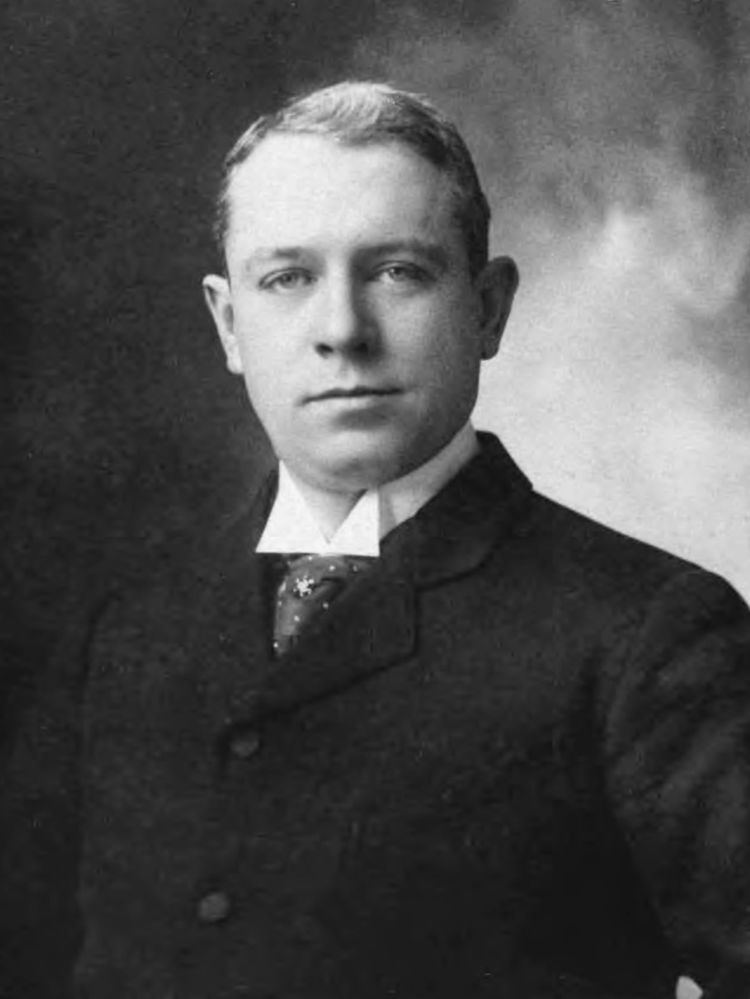Children 3 Parents Leander J. McCormick Name L. McCormick Books Characterology | Role Author Grandparents Robert McCormick Died 1934 | |
 | ||
Similar People Leander J McCormick, Robert McCormick, Cyrus McCormick, Harold Fowler McCormick | ||
Leander Hamilton McCormick (May 27, 1859 – February 2, 1934) was an American author, inventor, art collector and sculptor.
Contents

Life

Hamilton McCormick (as he was known) was born in Chicago, May 27, 1859. His grandfather Robert McCormick of Virginia invented agricultural machinery. His father, Leander J. McCormick (1819–1900), came to Chicago in 1848 and was a partner with his brothers, Cyrus and William Sanderson McCormick to form what would become International Harvester. He was the youngest of four children of his mother Henrietta Hamilton McCormick.
McCormick received his education principally at Phillips Academy, Andover, and at Amherst College, graduating in the class of 1881. He afterwards took a course in law at Columbia Law School in New York City and studied architecture in New York. After finishing his education he traveled in the United States, Europe, northern Africa, Mexico, Central America, Yucatan, the West Indies and the Bermudas. In 1886, while touring Europe, he met Constance Plummer, the daughter of Edward Plummer, of Canterbury, England, whom he married on February 15, 1887. They had three sons: Leander James McCormick born January 6, 1888, Edward Hamilton McCormick born August 3, 1889, and Allister Hamilton McCormick born August 3, 1891.
At the age of fourteen and McCormick invented a non-pickable door lock. While at college he invented two automatic railroad car couplers and a ballot box to register votes and prevent fraud at the polls. His principal sport in youth was boxing. He was one of the founders of the Amherst chapter of the Beta Theta Pi Society. After graduating from Amherst he resided for several years in New York City, where in addition to taking law and architectural courses he devoted his time to his study of Characterology. He also collected paintings, old armor, ancient pottery, old ivories, primitive glassware and objets d'art while living in London for seventeen years after his marriage.
His art collection included 200 examples of the Italian, early English and old Dutch schools. He made over a hundred inventions and took out many patents. However, since he inherited a fortune, he did not need to earn a living. He claimed to have invented an aerial torpedo, motorcycles, eyeglasses for looking backward while driving, a watch which shows the time the world over, an electric rotary brush, an electric rotary razor, an apparatus to locate vessels in a fog at sea, a boat which will not rock in rough water, a quadricycle to lessen vibration upon rough roads, an hydroplane for skimming over the surface of the water, an ambulance to prevent shock or vibration to its occupant, an audiophone for theatre use, a water cycle, a scheme to bridge the English Channel, and finally at the end of the World War I an improvement in war tanks, which came just as hostilities ended.
During the war he was a government consultant at Washington, DC on financial, military and naval issues.
In sculpture his principal works were a three-quarter-life sized statue entitled "Sapho" one of "Victory," and a figure emblematic of "The Birth of a Spirit." He was the author of Characterology; an exact science, published in 1920, and Student's Course in Characterology: an exact science in fifteen lessons in 1921. He also wrote on other related topics.
He died on February 2, 1934 and was buried at Woodlawn Park Cemetery in Miami, Florida.
Legacy
His mansion, near downtown Chicago, has been the home of the Chicago Lawry's restaurant since the mid-1970s.
